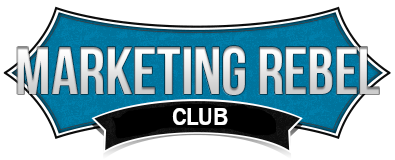
Entrepreneurship Dashboard > Creating and Implementing Your Personal Action Plan
PLANNING AND MEETING YOUR GOALS
Stan Dahl: Creating and Implementing Your Personal Action Plan

Overview
Show Notes
Action Items
Resource Links
Stan Dahl kicked off the Action Seminar, speaking about how to set goals and create a plan to achieve them.
He stressed that you must follow processes that are proven to work, evaluate your progress (what is working and what isn’t), adjust as necessary and keep going.
You should fail as cheaply and as fast as possible and adjust.
You also have to break your goals down into a series of steps…a series of destinations.
He also introduced his system of taking notes. He discloses the questions you should ask for every step you want to take.
This will help you take notes more effectively and streamline the process by getting you to weed out the extraneous matter and concentrate on what is important.
This presentation was done in 2 parts, which were combined in this video.
Part 1:
13:15 Deming: “If you can’t describe what you do as a process, you don’t know what you’re doing’.
Applied to entrepreneurs:
A lot of entrepreneurs will do something successfully as a fluke and then hold themselves out as an expert.
Long term success comes from following processes and learning as you go. Break it down into steos and follow those steps. You will have failures, but over the long term you will succeed.
Goal setting:
Just seeing the end goal is not enough. You have to break it down into how you are going to accomplish it.
Make sure you focus on both the goal and the steps to reach that goal.
Planning is noun-focused (what you have to do, not how you are going to do it), marketing is verb-focused.
22:08: Stan shows a form that people can use to take notes efficiently.
Structure your notes to show you what you want to have (nouns), why you want it (rationalize it), how (verb) (what step or steps you need to take).
Quick hit: Can you accomplish it in one sitting of about 2 hours? Low-hanging fruit.
These are notes, not a final copy. Just take notes for each speaker.
25:30 If you can’t fill in all columns, it is not a goal. Stan gives an explanation of this. This is a good way to figure out what the real goals are that you should be pursuing.
Part 2:
One of the most common questions revolved around productivity.
29:48 You have to have both a goal and a process. Your goal must be realistic.
31:28 Three states that you pass through in reaching a goal
- Where you are now
- The path you have to take
- Reaching the goal
There is pain and pleasure associated with each state. Change has a pain component. The pain of where you are now must outweigh the pain of changing.
Also, the pain of where you are now must outweigh the pleasure you have where you are now. It’s not all bad.
Greatest motivation is getting away from pain, not getting closer to pleasure.
What is it going to take (time, money, opportunity cost) to aget where you want to go.
Rules:
38:40 A journey of 1,000 miles starts with a single step. You can’t have a hard and fast 2 year plan because the world changes and you change. Just start moving, sketch out a plan, and adjust as you go.
39:42 If the plan takes more than 8 weeks it will not happen. Things change too quickly. So you have to break down your goal into chunks that take less than 8 weeks to finish.
This also gives you motivation because you have accomplished the mini-goal.
41:24 You learn along the way about things that didn’t go as planned (took longer, cost more).
It is easier to write it down than to keep it in your head (list, chart, mind map)
42:48 No more than 3-6 steps for each sub-goal. If there are more than that, break it down further. Also, if any step cant be accomplished in 8 weeks, breat ii down further.
Keep focused on the next step. Don’t even think about a later step until the first step is done.
47:08 Setting yourself up for success:
- Be honest with yourself about the pain/pleasure offset. If you are not in enough pain you should consider waiting to start on your journey. Enjoy the pleasure you are in.
- You need a series of realistic and measurable goals
- Gather resources. What do you have and what do you need?
- Execute and measure. Re evaluate if necessary.
- Repeat what works and fix what doesn’t work.
- Be honest with yourself as to how much pain you are currently in. If the pain/pleasure scale is not tipped toward pain, it will be more difficult.
- Set a series of realistic and measurable goals.
- Gather resources. What do you need to take the next step?
- Execute and measure each step.
- Re-evaluate your goals periodically and revise if needed.
- Repeat what works and fix what doesn’t.
You might find mind mapping to be useful when breaking down your goals. Click here for our info on how to get started.
[Please-comment-on-this-post]
[Footer-links-AS-videos]
